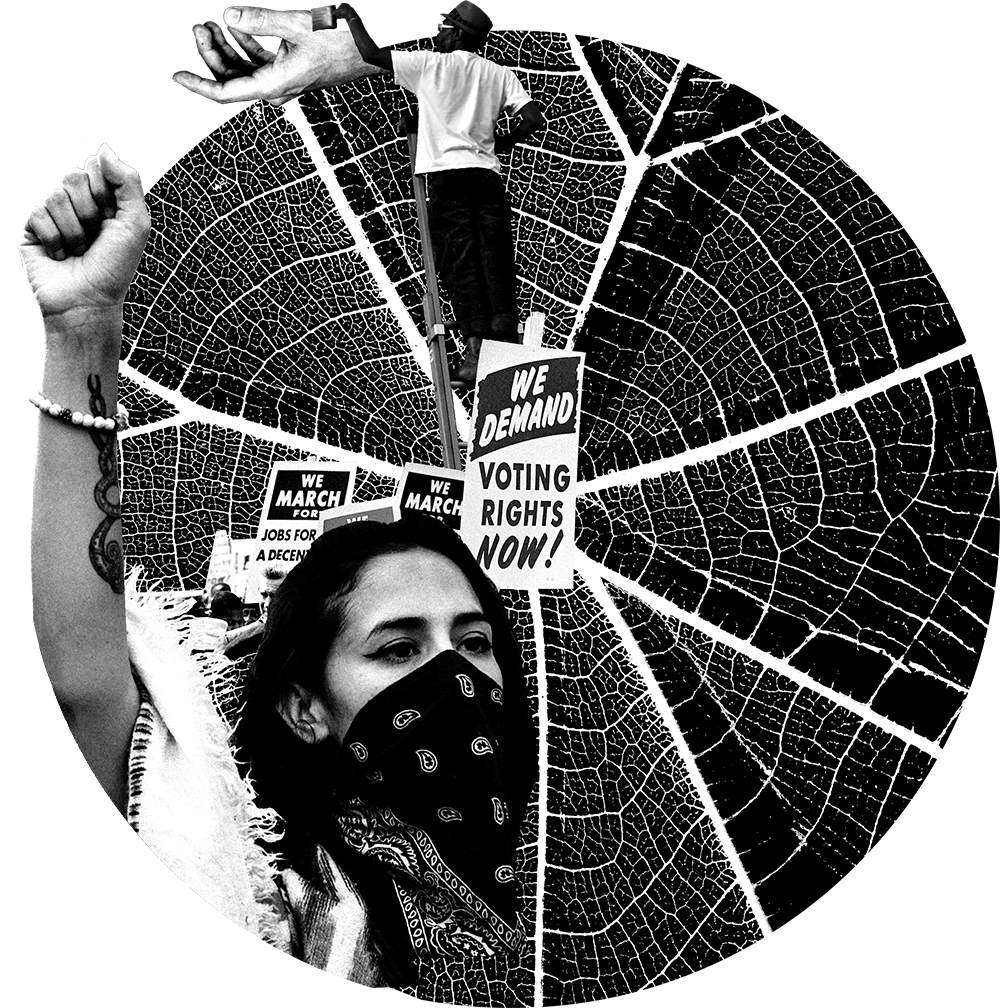Combat fascist organizing
vote to organize!
Fascist groups, because of their tendency to display devotion to authoritarians, organize best online. This leaves them open to a great deal of vulnerabilities and opportunities for communities to organize against them. Disrupting fascists online is important work, and because of the group’s violent tendencies, it’s work that shouldn’t be taken lightly. Be strategic by following established best practices, and prepare for a long-term commitment in order to maximize your impact.
Identify—a fascist is a fascist. Though it’s a political ideology with a specific far-right definition, it’s out of fashion in the United States to refer to groups as fascist. Instead, corporate media seems to prefer using the terms white supremacist, alt-right, or the innocent-sounding far right. Organizations like the Proud Boys publicize their token non-white members in order to claim that their critics are merely unintelligent, or even racist. Make no mistake, though: totalitarian, nationalist, conservative, patriarchal, violent movements can be called fascist, and may or may not be white supremacist.
Decide where to direct your efforts. Identify a contained community where far-right beliefs are embraced and tolerated by a smaller cross-sampling of the general population. General-purpose, high-traffic online communities and networks work better than single-track white supremacist or nationalistic sites where you and your fellow organizers are likely to be identified and banned quickly. Address these spaces only after your organization has gained some experience disrupting white supremacists on public networks.
Focus on the most dangerous players. Targeting those in the community who threaten or admit political violence against marginalized groups makes an example out of them. The attitudes of the moderate members and non-participant observers who might otherwise be vulnerable to rightward drift by hateful ideas will be the first to shift away from fascism based on your efforts.
Easy does it. Overt, brute force disruption tends to give fascists a fortress mentality; they’ll take greater efforts to conceal their identities; and in many cases they will flee to different platforms altogether. In many ways, this retreat is a positive outcome, because fascists should not be allowed a comfortable space anywhere. However, this tactic does nothing to holistically strike at the root cause of fascist attitudes and does nothing to change minds or attitudes. Do your best to identify other members of the community who are clearly on the left and disagree with the fascists early on and safely bring them into your fold to join forces with your group. But be aware that other anti-fascists who are present, if not aligned with your tactics, may unintentionally hinder your efforts. When seeking allies, make sure to be on the lookout for fascists who are attempting to root you out.
Invent personas that are each partially true for the members of your group, played for naïveté. Never let on that you know the others in your group. Act politically unsophisticated, but not unintelligent. If your intentions are challenged, tell the skeptics you are apolitical or independent, but be vague. Pretend to be the type of person who is interested and wants to be convinced, but challenge everything.
Take technical precautions. Use a browser like Opera Developer, which has a built-in VPN, or Tor paired with a VPN and other security measures. Never use public wifi or sign in to any of your personal accounts using the browser you use for this work. Learn and practice security culture, sharing tactics with your organization.
This work is up-close and personal. If you make the mistake of thinking all fascists are backwards and uneducated, you will be attacked emotionally, personally, and intellectually by the more sophisticated participants. Learn the fascists' real names, locations, and jobs. Take and catalog screenshots, and keep detailed notes. Slowly but surely, turn the tides of the community’s discourse towards class consciousness, anti-racism, feminism, and anti-fascism.
Contact the media with any actionable information about violence and racism. But don’t speculate too much; only respond to what is written, not its perceived meanings. With your organization, plan out carefully-orchestrated releases of information about individuals on social media in accounts that are completely divorced from your group and its members. Ensure that screenshots displaying their words are forever associated with their real names. Work to get them fired and make it hard for them to find work.
Remind yourself why drastic measures are necessary. If the idea of getting someone fired seems harsh to you or anyone in your group, remember the harm a fascist can cause in their workplace. Those who threaten politically-motivated violence against groups of people and who believe in white supremacy should be kept out of positions of potential authority and power through which they can wield their fascism at work or in the community.
Above all, concentrate on stopping the spread of fascism. Once it starts, it expands rapidly and can quickly shift into real-life violence, eventually building towards organized genocide. The end goal is to deplatform the fascists and potentially hinder their ability to live life comfortably while harboring hateful, genocidal attitudes and potentially volatile rage. Organize to find those communities that exist in those chaotic margins between anger and peace and pull them towards a more progressive, empathetic worldview.
Next: Counterprotest fascists




